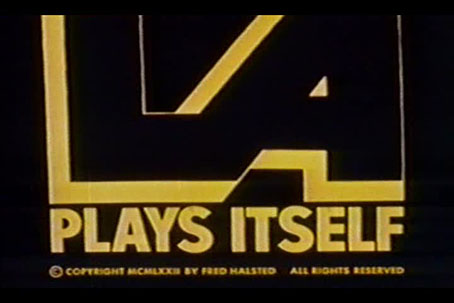
Presenting an interview by John Wisniewski with William E. Jones, author of Halsted Plays Himself (2011). The subject is gay filmmaker and performer Fred Halsted (1941–1989) whose 1972 film LA Plays Itself was a pioneering piece of low-budget cinema which combined a fragmented view of Los Angeles with explicit liaisons between several men, one of them portrayed by Halsted himself. Halsted took advantage of the period between 1970 and 1975 when porn in the US was no longer illegal but hadn’t yet been industrialised. As with Genet’s Un Chant d’Amour, what you get on the screen isn’t a product, it’s the representation of an obsession. It’s this that makes LA Plays Itself a still surprising and provocative piece of work.
I arrived at this film and Halsted somewhat belatedly, in fact I don’t think I’d read anything about him at all until William E. Jones was interviewed when his book was published. (Matters haven’t been helped in this country by the way hardcore porn of any kind was still illegal into the 1990s.) LA Plays Itself fascinates for the view it gives of the LA cruising scene which John Rechy described in considerable detail in The Sexual Outlaw. It’s a curiously hybrid film, neither straightforward porn—many of the sex scenes are fragmented—nor is it narrative fiction or outright documentary. Together with the recently reissued films of Peter de Rome, it’s the kind of thing that few people would be likely to make today, despite the easier access to film technology and the relaxing of censorship. And like all porn films of this era, it now has a unique look simply because it’s been shot on film.
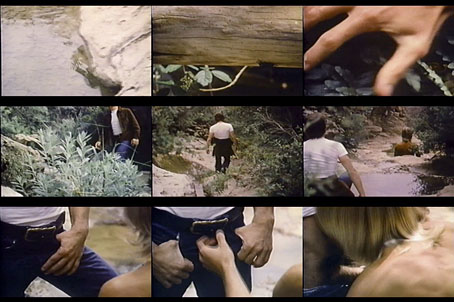
None of Halsted’s films appear to be on DVD at the moment, and as William Jones notes below, Sextool (1975), the film Halsted regarded as his major work, may only exist as a single fading print.
Here’s John and William.
* * *
John Wisniewski: Why did you choose to write your book on filmmaker Fred Halsted?
William E. Jones: For several years I made money in the adult video industry, producing budget DVD compilations (4 hours for $10) sold in adult video stores. Before technological innovation rendered my job redundant, I watched over 700 hours of gay adult film and video produced between 1969 and 1999. In such vast quantities, the material, especially from the second half of the period, began to seem nightmarish in its ugliness. I would relish the opportunity to see any earlier title, produced before 1985, directed more or less like a movie, shot on location, and sometimes even acted fairly well. I can say without hesitation that Fred Halsted’s films were my favorites of all the videos I saw during those years in the porn industry.
Fred Halsted’s films have many fans but few advocates, and I thought my book could intervene in a decisive way before his legacy – the films and the memories of those who knew him personally – disappears completely. I also chose him as my subject because of his connection to Los Angeles. He lived and worked in neighborhoods I pass through nearly every day. But there was something else that drew me to his films, the uncanny power of work by a novice, and a self-taught one at that. His films are crude, idiosyncratic, and at their best have the force of a revelation.
JW: Could you tell us how Fred Halsted got involved with making movies?
WEJ: Fred Halsted was the son of a construction worker and an agricultural laborer, so the notion of making movies as a career was foreign to him. He went to Los Angeles State College (now California State University, Los Angeles) and majored in biology. One of his professors had a Bolex – the 16mm camera of choice for experimental filmmakers – and Fred asked him if he wanted to help make a porn movie. The professor, who found Fred very attractive and later became a close friend, said yes, and the rest, as they say, is history. Fred had the intention of making sexually explicit experimental films with himself as the star, and in the case of LA Plays Itself, he succeeded in his ambition. The fisting scene that made Fred famous (or notorious) was one of the first parts of LA Plays Itself to be devised, a bit like Divine’s eating the dog turd in Pink Flamingos.
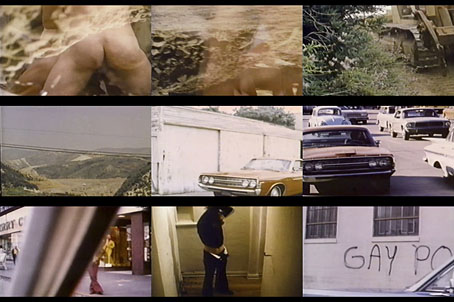
JW: How was Sex Garage (1972) marketed? Was it played on a bill with short subjects?
WEJ: Fred produced Sex Garage expressly to be shown on a double bill with LA Plays Itself, which is under an hour long, so not quite feature-length. The pairing works well and has been repeated in subsequent screenings. Sex Garage was very quickly shot – Fred said production took six hours – and the raw style of the film adds to its eroticism.
JW: Salvador Dalí made a famous remark about the film; could you tell us about this?
WEJ: Before the film’s New York theatrical release in 1972, publicist Stuart Byron arranged advance screenings of LA Plays Itself for various figures from high culture and the gay liberation movement. At the events, he recorded their remarks and used them for promotional copy. Dalí’s reaction to the fisting scene was “new information for me,” which later featured prominently in advertisements.
JW: How did other gay artists view Halsted’s films?
WEJ: The publicity screenings for gay liberationists did not go well. Fred was a sex radical and provocateur, but his attitude towards leftist politics was not very respectful or pious, and many things – from LA Plays Itself’s rather brutal fisting scene to his casual use of the word “faggot” in public – angered his gay contemporaries. It seemed as though a West Coast working class thug unfamiliar with the appropriate discourse of liberation was bent on disrupting the debates in New York. He shocked the people who had become accustomed to doing the shocking themselves.
Rosa von Praunheim showed his first film, It Is Not the Homosexual Who Is Perverse, But the Situation in Which He Lives, in New York around the same time and got much the same reaction. Rosa and Fred became friends, and Rosa would stay with Fred and his lover Joey Yale every time he visited Los Angeles. Fred appears in Rosa’s documentary about gay liberation in the US, An Army of Lovers, or Revenge of the Perverts, which shows Fred and his ideas in a critical light. There must have been some falling out between them, because when I asked Rosa about Fred while researching the book, he offered only a brief, anodyne statement of little use to me.
A gay video artist who directed porn under the name Jason Sato – he also directed a couple of Matt Sterling’s titles – was more resistant and even less helpful. After many attempts to engage Sato, I got only a brief email from him stating that Fred’s politics were a lot more conservative than one might suspect from the evidence of the films. A friend characterized this competitive, ungenerous attitude as a case of “when queens collide.” Apparently, Fred burned a lot of bridges. I also think that Fred brought out in his friends behavior that they later had occasion to regret. He came to represent an era of excess that some who lived through it would prefer to forget.
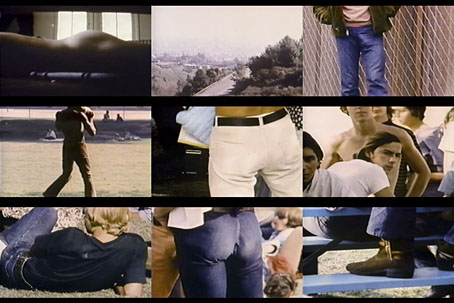
JW: Fred Halsted was not as experienced in filmmaking as other such filmmakers were, but managed to create unique looking films. Was this the strength of his films? Was Fred a fan of the films of Kenneth Anger and James Bidgood?
WEJ: I would say the main interest in Fred’s films is not in their visual qualities, but in their relation to narrative and to history. He grappled with problems from his troubled childhood, and the best of his films retain some trace of that personal drama in the way their stories enact a power dynamic between the performers. He began making films at a time when rapid transformations in social mores and in the urban landscape were taking place, and he captured a sense of that. Kenneth Anger’s films, which are by any standard more technically accomplished, have a mythic dimension that gives them a timeless or archetypal quality. James Bidgood had little interest in narrative, but he managed to imbue Pink Narcissus – which looks like lurid gay folk art – with such visual dynamism that its lack of conventional characterization or plot hardly matters.
I have no idea what Fred’s reaction to Pink Narcissus was, or even if he had an opportunity to see it, but Fred certainly knew Kenneth’s films, probably from seeing them at the Cinema Theater on Western Avenue in Los Angeles, where the LAPD had busted screenings of Scorpio Rising and Jean Genet’s Un Chant d’Amour in 1964. Fred later got to know Kenneth, and the two of them were part of the same circle: an underground within an underground, the Los Angeles gay scene devoted to occult practices and sadomasochism. I know little about this scene, because the few who survive from that time and place have not been very forthcoming about its members (some of whom were celebrities) and its rituals. I hope Kenneth – who has thus far been ill-served by biographers – finishes an autobiography before it’s too late.
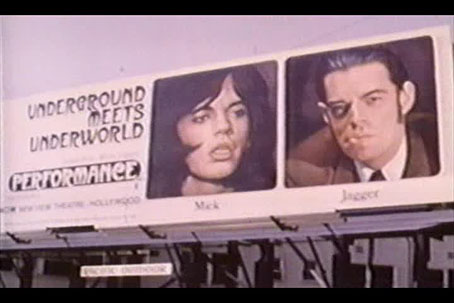
JW: What led to the end of Halsted’s career as a filmmaker?
WEJ: Fred spent years preparing what he hoped would be his magnum opus, Sextool. He took every opportunity to talk about the film in interviews, so there had been substantial advance publicity for it, but the film’s release, such as it was, fell flat. Sextool played for only one week at the 55th Street Playhouse in New York, where LA Plays Itself had played for many months three years before. There was almost no critical reaction to the film, with one notable exception: scholar and curator William Moritz wrote a long and eloquent appraisal of the film. (This text is reprinted in Halsted Plays Himself.)
Although Fred continued to direct films in the gay porn industry – the last one, Breaker Blue (1988), was released a year before he died – Sextool effectively ended his career as an independent filmmaker. There were a number of reasons for this. Fred shot Sextool in 35mm, and the choice was disastrous for him. The expense of 35mm film stock caused Fred to avoid shooting much material, and in the editing, he constructed a film that was by necessity schematic almost to the point of incoherence. Fred hoped that the format change would allow the film to be shown at art houses, few of which had 16mm projectors. Mainstream theater managers balked at Sextool, which was even more aggressive in its sexuality and aesthetics than LA Plays Itself. An alternative strategy would normally have been to show the film on the porno circuit, but since only a handful of gay porn theaters were equipped with 35mm projectors, Sextool was left with minimal theatrical distribution. In light of subsequent developments in cinema and changes in the political climate, it is difficult to understand how Fred could have considered Sextool a commercial art house attraction. Fred was unable or unwilling to grasp how society had changed in the 1970s. By 1975, the mainstream vogue for “porno chic” was over, and the production of adult films had become an industry in which there was little room for an eccentric independent like Fred Halsted.
I should add that Sextool is what archivists call an “orphan film” that has no film studio, artist’s estate, or other rights-holder to facilitate its preservation. As far as I know, there is only one 35mm print of the film in existence (at MoMA in New York) and its color is badly faded. Will the film ever be restored and shown to audiences again? I hope so, but the prospects do not look good.
Fred Halsted killed himself in 1989. He was manic depressive, and the medication he took ruined his appearance. He also had a drinking problem, and his behavior became increasingly self-destructive at the end of his life. The decisive event was the death of his great love, Joey Yale, in 1986. After this, he went into an irreversible emotional and physical decline. Destitute, Fred sought refuge with an unsympathetic brother. (This man declined to participate in my project in any way.) Halsted Plays Himself, among many other things, makes a claim for Fred as a subject worthy of historical research and biographical writing as an alternative to the oblivion his disapproving family would have preferred.
JW: When looking back at the career and life of Fred Halsted, what did his life and work represent to many?
WEJ: I can’t presume to say exactly what Fred Halsted means to others. I am fully implicated in the question; that he represents anything to people now is to some extent an effect of my book. A question I am better able to answer is what I wish others to take from Fred’s example.
Fred came from an extremely humble background and received a public education with no special training in filmmaking. He made his way in the world by whatever means he could. When the exhibition of sexually explicit gay movies became legal, he decided to make one, featuring his own body and, in parts, his own story. The result of his work, LA Plays Itself, made him a star and earned him a degree of respect in the realm of culture. Fred explored the limits of sexual expression and personal freedom, but the circumstances that made this achievement possible existed only for a few years. Fred made a demand on the world, and he spoke in terms of utopia. Why has this utopia vanished? Will we ever be able to return to it, even in our imaginations? The best pornography – and I fully realize that this distinction of quality is subjective – asks these questions. They haunt Fred Halsted’s films, and that is why LA Plays Itself continues to inspire, arouse and disturb new generations of spectators to the present day. I hope the likes of Fred Halsted have not vanished entirely from this world. •
See also:
Halsted Plays Himself by William E. Jones at Lambda Literary
